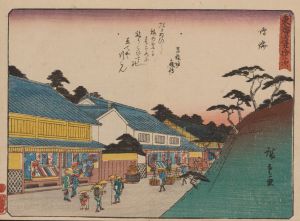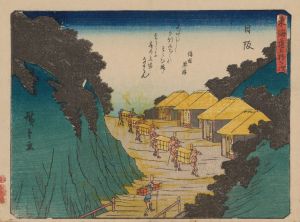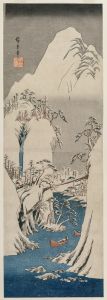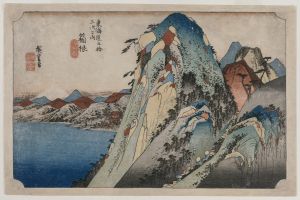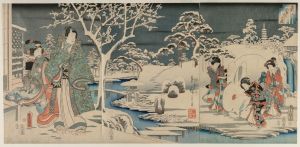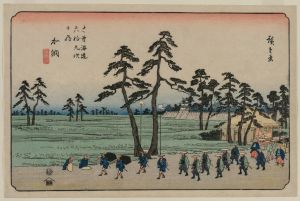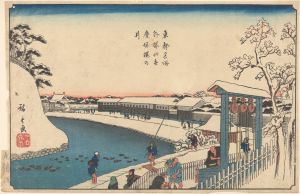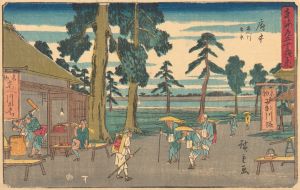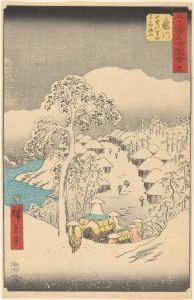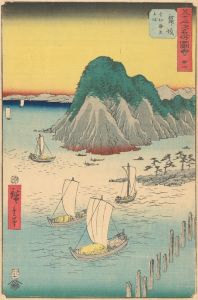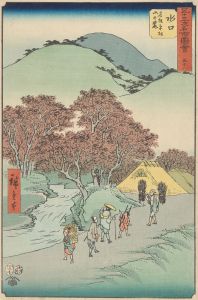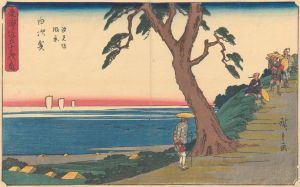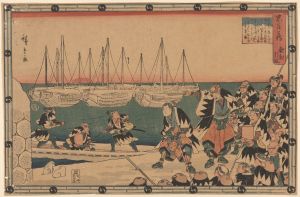
Kuwana
A hand-painted replica of Andō Hiroshige’s masterpiece Kuwana, meticulously crafted by professional artists to capture the true essence of the original. Each piece is created with museum-quality canvas and rare mineral pigments, carefully painted by experienced artists with delicate brushstrokes and rich, layered colors to perfectly recreate the texture of the original artwork. Unlike machine-printed reproductions, this hand-painted version brings the painting to life, infused with the artist’s emotions and skill in every stroke. Whether for personal collection or home decoration, it instantly elevates the artistic atmosphere of any space.
Kuwana by Andō Hiroshige is a woodblock print created by the renowned Japanese ukiyo-e artist Andō Hiroshige (1797–1858). This artwork is part of Hiroshige's celebrated series The Fifty-three Stations of the Tōkaidō (Tōkaidō Gojūsan-tsugi), which was first published in the 1830s. The series depicts the fifty-three post stations along the Tōkaidō, the main travel route connecting Edo (modern-day Tokyo) and Kyoto during the Edo period. Kuwana is the forty-second station in the series.
The print portrays the Kuwana-juku post station, located in present-day Kuwana City in Mie Prefecture, Japan. Kuwana was a significant location on the Tōkaidō route due to its position as a port town. Travelers often crossed Ise Bay by boat from Kuwana to Miya, the next station on the route. This crossing, known as the "Shichiri Watashi" (Seven Ri Ferry), was a notable feature of the journey along the Tōkaidō.
In Hiroshige's depiction of Kuwana, the composition highlights the maritime activity and the town's connection to the sea. The print typically includes boats, water, and elements of the port, emphasizing the importance of the ferry crossing. The scene may also feature travelers, local residents, or distant views of the surrounding landscape, showcasing Hiroshige's skill in capturing both human activity and natural beauty.
Hiroshige's The Fifty-three Stations of the Tōkaidō series is celebrated for its innovative use of perspective, vibrant colors, and ability to evoke the atmosphere of each location. Kuwana, like other prints in the series, reflects Hiroshige's keen observation of daily life and his ability to convey a sense of place. The series was highly popular during Hiroshige's lifetime and remains one of the most iconic works of Japanese art.
The exact details of the Kuwana print, such as specific visual elements or inscriptions, may vary depending on the edition or publisher, as multiple versions of the series were produced. However, the overall theme and composition consistently highlight Kuwana's role as a bustling port town on the Tōkaidō route.
Hiroshige's work, including the Kuwana print, has had a lasting influence on both Japanese and Western art. His ability to capture the essence of a location and his innovative approach to landscape art have inspired generations of artists, including notable figures in the Impressionist and Post-Impressionist movements.
This print, along with the rest of the series, is widely regarded as a masterpiece of ukiyo-e art and provides valuable insight into the culture, geography, and daily life of Edo-period Japan.





